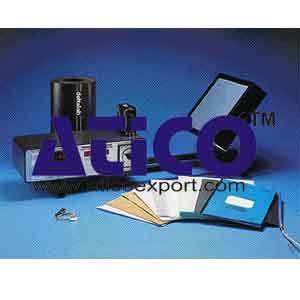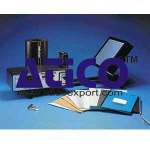Heat Exchanges
Teaching Objectives of
Heat Exchanges
- Effect of variation of angle of incidence of a plate on the heat transfer by natural or forced convection.
- Measurement of thermal conductivity of different materials.
- Demonstration of the chimney effect.
- Radiation studies for black or grey plates and determination of their surface emissivity.
Technical Specifications of Heat Exchanges
The consists of two heated plates, one with a black surface and a reflective obverse, the other with un-coated surfaces. The performance of the two plates allows comparison of the radiation effect. The plates are placed on an inclinable support to study convection. Application of insulating material onto the heated plate allows conduction studies to be made. The chimney effect is demonstrated using a circular conduit.
The main components are:
- 2 flexible heated plates. The electrical resistance of the plates is provided by a conducting paint, giving an even temperature distribution and low thermal inertia. The heater power is approximately 50 W.
- A set of plates in different insulating materials for conduction studies.
- A test frame on which is mounted an inclinable support to carry the heated plate and the insulating material.
- A circular conduit for study of the chimney effect.
- A fan for forced convection studies.
- Electronic control box with.
- Temperature controller for varying temperatures.
- Two timers with zero reset, for measurement of heating and total cycle.
- Voltmeter and ammeter.
- Digital thermometer with platinum probe for measurement of the surface and the ambient temperatures.
- Technical documentation and teaching manual
Dimensions and weight
- 1 000 x 450 x 400 mm – 12 kg.
Essential requirements
- This apparatus should be mounted on a horizontal table top and sheltered from draughts and changes in temperature.
- Power supply : 220 V, 50 Hz
- Navigation


